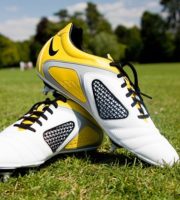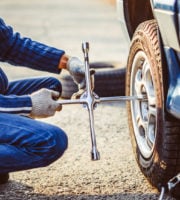From routine maintenance to completely restoring a classic vehicle, knowing how to shop for the best selection of car parts can make quite a difference. Understanding the difference between original equipment and aftermarket, knowing when to seek out salvage parts and when to shop at the dealers as well as learning more about how performance parts can unlock the full potential of your vehicle will allow you to make smarter purchases. Lacking the right part, failing to invest in quality components or paying too much for your repair parts could all lead to complications you would do well to avoid.
OEM Versus Aftermarket
Original equipment manufacturer (OEM) is a term used to denote parts and components that were produced by the vehicle’s manufacturer. Aftermarket parts can be produced by a variety of different suppliers and can vary significantly in terms of both quality and price. There are certain parts and repairs that require OEM components, while aftermarket parts may be a viable choice for others. Using parts that were made by a lesser manufacturer can lead to decreased performance and durability and may even void the warranty on newer model vehicles. Higher quality aftermarket parts are able to provide the same level of durability, quality and performance as original equipment.
Dealership Parts
The parts department of the dealership is often the only place to find model-specific parts and other OEM components. While many vehicle owners might assume that dealing solely with the dealership is the best way to source the parts needed for their maintenance and repairs, this is not always the case. Doing business with a dealership can involve lengthy delays, higher prices and less overall convenience. Knowing which parts need to be purchased from the dealership and which components can be found at any auto parts store or supplier is an important concern. The dealership is often the only viable option when it comes to repairing an older vehicle or sourcing hard-to-find parts and model-specific components.
Salvaged Components
Vehicles that have been totaled and those that are beyond repair will typically make their way to the salvage yard. While using parts from a junk car may not seem like the wisest course of action, more durable parts and rugged components may continue to retain much of their original value long after the original vehicle they were installed in has been towed to a salvage yard. Used components and equipment may also be found for lower prices than their newer counterparts, making salvaged auto parts an attractive option for those who are working with the confines of a smaller budget.
Performance Parts
Aftermarket parts that have been designed to exceed the durability, output and specifications of OEM components are known as performance parts. High-performance charge air cooler, sophisticated sensors and performance-exhaust components. Shopping with a performance parts supplier can allow you to find a wide range of parts, components and subsystems that can be used to upgrade your vehicle in a variety of ways.
Regardless of where you choose to shop for parts or which supplier you use, it pays to seek out parts and components that are of higher quality. Repairing your car, truck or other vehicle using substandard parts can decrease performance, lead to more frequent breakdowns and reliability issues. From a simple oil change to replacing a vehicle’s engine block, electing to make use of any parts or components that aren’t up to the job can lead to all sorts of problems.







